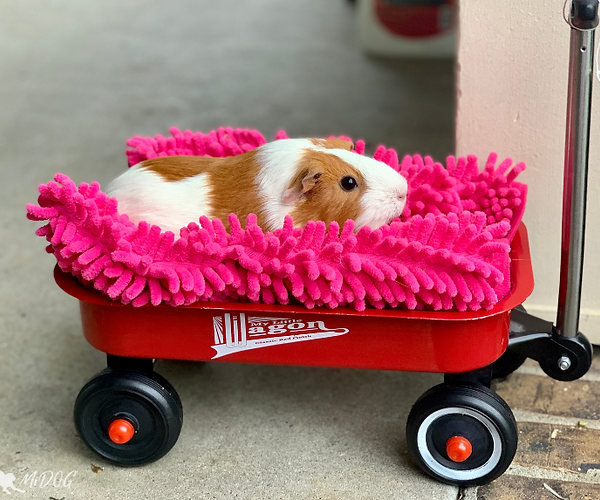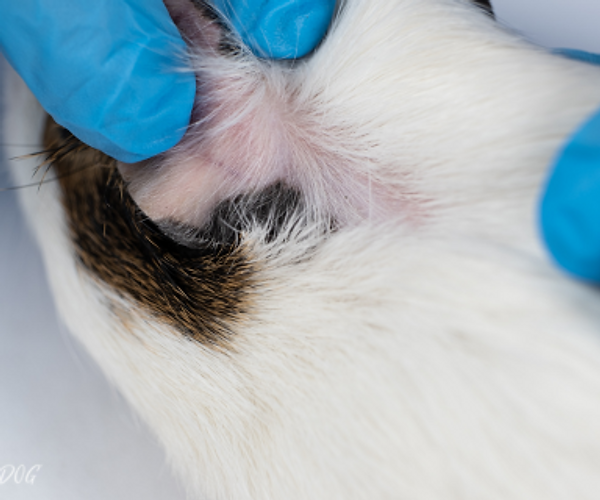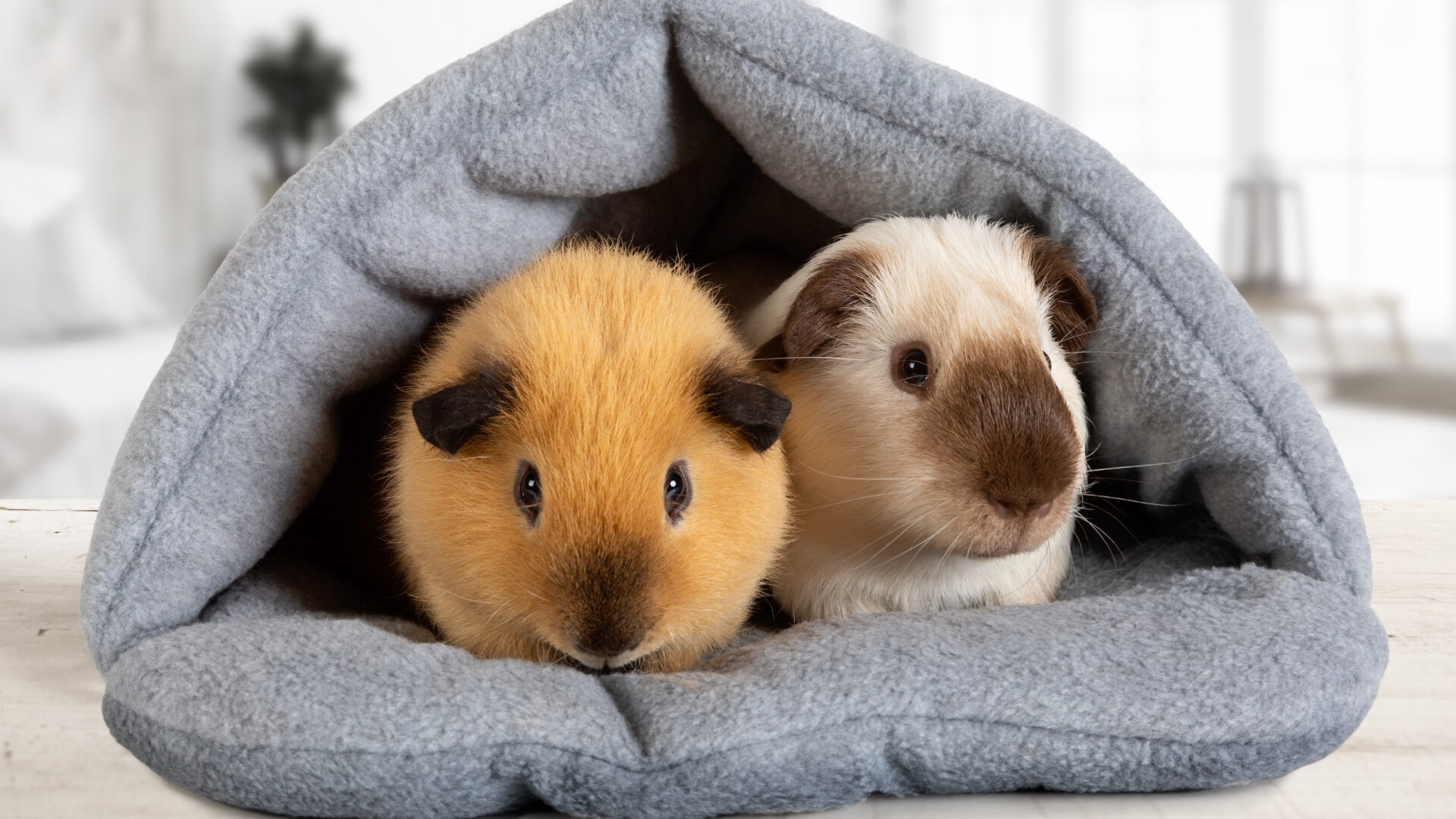
Ringworm in Guinea Pigs: Detecting Symptoms, Finding the Right Ringworm Treatment, and Embarking on the Road to Relief From Fungal Infection.
Guinea pigs are very social creatures with a host of emotions packed into little bodies. They make wonderful pets for children or adults and will show you their appreciation with a variety of chirps and squeals when they’re excited and happy. Think of them as tiny Siberian Huskies; heightened emotional states and are very vocal about them. When you first brought little Wilbur home, he may have been a bit shy. Then he learned the sound of the refrigerator as the source of all his fresh vegetables and the squeals of delight began. But what if, over time, your little pig became quiet again and started scratching all the time? What if he also started hiding in his house? Ringworm in guinea pigs is one common skin condition that can make them uncomfortable and withdrawn, but there are other possible differentials as well. Next-Gen Sequencing (NGS) technology can help differentiate among them so that Wilbur can get the relief he needs.
What Is Ringworm?
Ringworm (dermatophytosis) is, in fact, not a worm at all. It is a fungal infection caused most commonly in guinea pigs by the species Trichophyton mentagrophytes or Microsporum canis. Ringworm got its unusual name from its appearance in humans. A person with ringworm typically develops a red circular lesion on the skin that is itchy. The word “ring” comes from its circular shape and “worm” from the appearance a worm would have if touching end to end. (1) Fungi thrive in warm, overcrowded, and unsanitary conditions. Ringworm is highly contagious and spreads easily with direct contact. It can also survive on bedding, grooming tools, and other surfaces for months.
How Do Guinea Pigs Get Ringworm?
The fungal infection’s incubation period is 7 to 14 days; therefore, it’s most commonly seen in a newly acquired pet. Some pigs, however, can be carriers of the fungus without signs of infection, so a new member of the pet family without symptoms may also be part of the sick pig’s history.
It’s important to note that ringworm is a zoonotic disease. This term means that it’s transmissible to humans. It is also transmissible to other animals, so good hygiene is a must when caring for little Wilbur. Reinfection can occur from lack of hand washing, improper cage cleaning, and failure to include cage bowls, houses, and toys in the cleaning regimen. Proper hygiene is important to prevent the spread of the infection and help Wilbur minimize reinfection from contaminated materials and bedding.
Ringworm in Guinea Pigs: Clinical Signs and Symptoms

Guinea Pig Alopecia (Hair Loss); Bald Spot Behind Ear
- Alopecia (hair loss) especially on the head and face, eventually spreading to the legs and body
- Erythema (inflammation) in the areas of hair loss
- Peripheral crusts and flakes
- Scratching and itching
- Remember… some pigs are carriers and have no symptoms
Ringworm in Guinea Pigs: Risk Factors
- Immune suppression i.e., stress and overcrowding
- High environmental temperature and humidity
- Inadequate vitamin C levels (poor diet)
- Age – young guinea pigs
- Pregnancy
Differential Diagnosis (Other Causes of Skin Lesions)
- Parasites – mites or lice
- Pyoderma (bacterial infection) This may also occur secondarily and be concurrent
- Nutritional deficiency (specifically vitamin C)
- Allergies or contact dermatitis
- Ovarian disease
- Cancer
- Diabetes
- Thyroid disease (2)
Getting a Diagnosis for Your Pet
If your little guinea pig friend has any of the ringworm symptoms listed above, he should be taken to your veterinarian who will perform a physical exam and run tests to work through the list of possibilities. The most common first line of tests are skin scrapings and fungal culture. Skin scrapings evaluate for mites by scraping the affected lesion and viewing the debris under the microscope. Fungal cultures are obtained by plucking the hairs at the periphery of the skin lesion, introducing those hairs to a special media, and allowing time for the fungus to grow. Your veterinarian may also look at Wilbur’s skin under an ultraviolet light since one of the types of ringworm species highlights in this manner. While fungal cultures are the gold standard of testing, they take up to two weeks to complete. Next-Gen Sequencing technology should be considered for more expedited results. This is due to NGS technology’s ability to determine which organisms are present in your guinea pig’s skin without having to grow them over time as is the culture’s technique. The sooner a proper diagnosis is made, the sooner your pig will begin the correct treatment protocol.
Ringworm Treatment for Guinea Pigs
Treatment Responsibilities for Ringworm in Guinea Pigs as the Owner
At the first sign of little Wilbur being sick, he should be isolated from any other guinea pigs and pets. Due to the highly contagious nature of ringworm in guinea pigs, be prepared to treat all of your little pigs even after separation. Above all, hand washing is crucial after handling any potentially infected animals.
Additionally, Wilbur’s cage, house, bowls, and toys will need daily cleaning with mild soap and bedding will need to be changed. Disinfecting the cage will be reserved for when his condition is resolved. Always make sure that any disinfectant used is pet-friendly.
Follow Your Veterinarian’s Treatment Plan
Your veterinarian will determine whether or not Wilbur will need topical and/or oral medication based on the severity of his symptoms. Anti-fungal creams and wipes are available and will be prescribed. Even though over-the-counter products exist, always check with your vet as to which is safe to use on your pig. Oral medications are usually reserved for generalized lesions. Some pigs will also require oral antibiotics to treat secondary bacterial infections caused by scratching.
Vitamin C Deficiency in Guinea Pigs
Correct any nutritional deficiencies by providing your pig with vitamin C every day in the form of fresh vegetables and fruit. Tomatoes and bell peppers are packed with vitamin C as well as the obvious pieces of orange. Do your research on vitamin C-rich foods and offer a variety of options to see which ones your pig likes best. This is standard for all guinea pigs to be healthy.
Finding the Best Treatment Option for Your Guinea Pig’s Ringworm
Treatment length will depend on the severity of symptoms. It can range from 1 to 2 months. Negative testing should precede the discontinuation of therapy.
There is good news when dealing with Dermatophytosis in a guinea pig. The road to ringworm treatment in guinea pigs may be long, but you will definitely be successful if you follow your veterinarian’s treatment plan and practice good hygiene. There is a light at the end of the tunnel and little Wilbur will be very thankful and squealing for his fresh veggies in no time.
The MiDOG Animal Diagnostics utilizes NGS technology to detect and quantify microbial DNA through untargeted and comprehensive sequencing and quantitative comparisons to reference databases. The MiDOG NGS technology provides a useful opportunity to shed light on the microbial makeup of your guinea pig’s skin for clinical application. The MiDOG microbial test is grounded on scientific research that provides veterinarians with DNA evidence for the guided treatment of guinea pig bacterial and fungal skin infections. A MiDOG microbial test provides the technologies for the accurate identification of all microorganisms within a pet’s sample, independent of culturing.
Find out if your vet uses MiDOG before you book your next appointment!
References
- Centers For Disease Control and Prevention. Reviewed December 29, 2020. Accessed July 1, 2023. https://www.cdc.gov/fungal/diseases/ringworm/index.html
- Yartmouth Veterinary Center. Accessed July 15, 2023. https://www.yarmouthvetcenter.com/guinea-pig-ringworm.pml
Categories: Exotic Pets, Guinea Pigs, Next-Gen DNA Sequencing Technology, Pet Parents, Skin Health

